Yamaha is a large
conglomerate company which makes everything from vehicle engines, motorcycles,
vast other products and musical instruments. Even though each clarinet is
stamped “Established in 1887” they have not made clarinets. They have only made
clarinets since the 1970s or even early 80s.
Original Models
At the beginning Yamaha clarinets were Buffet clones but, of course,
they now make an entire range of clarinets to suit individual tastes of
styles. Just like other makers, Yamaha had to tweak certain
instruments to get it to a certain taste. One example is the early AE
model. Working in conjunction with Nicholas Cox, Yamaha developed
the AE over 4 or more years to get a clarinets with a slightly larger bore
than an R13 to produce the darker characteristics of a larger bore, such
as a Boosey & Hawkes 10-10 model. The AE apparently delivers the 10-10
darker elements with the more even response from R13s But keep
in mind, not all AEs are the same – the later ones are better than the
earlier ones for this design.
The AE model has a slightly larger and longer bore than the Buffet R13.
Additionally, the toneholes are relatively small with respective tonehole
shaping. The design allows the AE to be more resistant than other models
but the sound will be focused, pure and have powerful projection with the proper
level of air support. A distinctive darkness is blended in by use of a
longer bell. For players that prefer the sound of a B&H 10-10 the AE
provides the woodier tone with the response and focus of a more modern clarinet.
The SE model has a similar Buffet RC bore. Minimal resistance is
achieved through the use of larger toneholes, larger tonehole overcut and
undercut. The upper joint taper is also longer than the Buffet RC model.
Due to the larger bore the production and volume of sound is more easily
achieved
Model: YCL-SE (from yamaha website)
Years: 1995-
Key: Bb
Body Material: Wood
Key Plating: Silver
Bore: 14.78mm
Current Model: Current
The CS model is the original “Custom” and is modeled after the Buffet R13.
The CS has small toneholes with a larger undercut and a small overcut.
This design allows the clarinet to blow easily with good projection yet have a
concentrated and clear tone. The CS model was originally developed in
conjunction with the french player Claude Faucomprez.
Model: YCL-CS Years: 1994- Key: Bb Body Material: Wood Key Plating: Silver Bore: 14.65mm Current Model: Current
The CX model has CS attributes except for a different bell ring and separate
tonehole chimneys (similar to the Buffet E-11). This design results in a
brighter tone than the CS with the CS responsiveness.
Model: YCL-CX Years: 1994-1998 Key: Bb Body Material: Wood (with wood inset toneholes) Key Plating: Silver Bore: 14.65mm Current Model: None
Non-Custom Models (Student and Intermediate)
The model 64 is designed after the Custom series of quality yet offer a
better value of student models. The 64 is free blowing and responsiveness
designed after the Custom SE model.
The 34II and 34IIS are student grenadilla wood models available in nickel or
silver plated keywork (34II-S). The toneholes are designed to provide a
greater ease of playing for younger players as they are undercutted straight
toneholes (no overcutting).
The 26II is a student clarinet made of ABS resin.
| Models | Notes | |||||||||||||||||||||||||||
| 20 (plastic) | ||||||||||||||||||||||||||||
| 22 (plastic) | 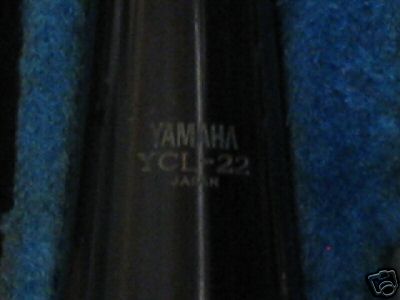 |
|||||||||||||||||||||||||||
| 24 (plastic) | SN example: 015762 | |||||||||||||||||||||||||||
| 250 (plastic) |  |
|||||||||||||||||||||||||||
| 26 II (plastic) | 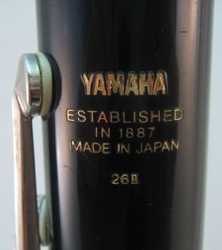 SN SNExample: 128853 |
|||||||||||||||||||||||||||
| 34 (wood) | 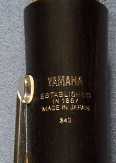 SN example: 005080A and SN example: 005080A and006123 and 046107
|
pics from Junkdude.com | ||||||||||||||||||||||||||
| 52 |
|
|||||||||||||||||||||||||||
| 450 | ||||||||||||||||||||||||||||
| 61 | 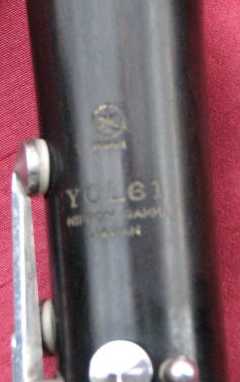 SN SNExample: 004019A
|
|||||||||||||||||||||||||||
| 82 | 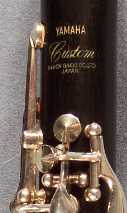 1982 1982era
|
pics from Junkdude.com
pic # 1
|
||||||||||||||||||||||||||
| CS-G Custom |  |
from ebay | ||||||||||||||||||||||||||
| CS-GH | ||||||||||||||||||||||||||||
| 64 |
(from Yamaha) Each tone hole is individually hand-tapered and undercut for optimum tone quality, intonation, and uniform response throughout the instrument's range Eliminates damage to the bridge key mechanism. 1995-2002.
|
|||||||||||||||||||||||||||
| CS |
|
|||||||||||||||||||||||||||
| SE |
|
|||||||||||||||||||||||||||
| CX |   
|
|||||||||||||||||||||||||||